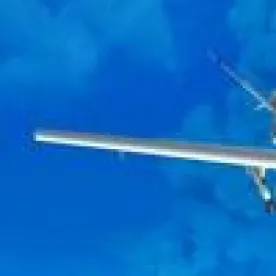Members of the House Committee on Transportation and Infrastructure pushed the FAA on Wednesday, December 10, to accelerate integration of unmanned aircraft systems (UAS) into U.S. airspace, expressing concern that regulators in other countries are ahead of the FAA in permitting safe UAS use, setting back economic development in the United States.
But these same members also made it clear that safety is critical. As the Chairman of the Full Transportation and Infrastructure Committee Bill Shuster (R-PA) said, “Safety is paramount. It must be first and foremost.” These views were echoed by the Ranking Member of the Aviation Subcommittee Rick Larsen (D-WA), who urged FAA to “move forward to ensure progress and competitiveness” but not “at the expense of safety.”
This tension—between accelerating the development of an exciting new technology while at the same time ensuing its safe operation—was a common theme throughout the hearing. And with the FAA reauthorization bill looming on the horizon, members were clearly interested on what action they could take legislatively to move the ball forward.
Meanwhile, even as House members questioned the FAA on its progress in UAS integration, the FAA announced Wednesday that it had granted a second round of exemptions to allow four companies to use UAS commercially for aerial surveying, monitoring construction sites, and inspecting oil rigs. Earlier this year, the agency granted exemptions to seven film and production companies. But the FAA still has not acted on at least 150 other requests for drone exemptions from commercial operators.
Rep. Frank LoBiondo, chairman of the House Subcommittee on Aviation, said at Wednesday’s hearing that major U.S. companies were taking their UAS research activities to foreign countries such as Canada and Australia “because FAA regulations are too burdensome.” He also noted that road builders in Germany and farmers in France are using UAS now and reaping economic benefits from it. “I can’t help but wonder that if German, French, and Canadians can do some of these things today, then why can’t we also we doing them,” said Rep. LoBiondo (R-N.J.).
He said that UAS represent “a tremendous economic opportunity,” with potential applications in real estate, agriculture, medical transport, and infrastructure maintenance, among other possible uses. The Association of Unmanned Vehicle Systems International estimates that UAS will create more than 70,000 jobs in the United States and generate an economic impact of more than $13.6 billion in the first three years of integration. The FAA estimates that $89 billion will be invested in UAS worldwide over the next decade.
But the FAA has been slow to integrate UAS into the U.S. airspace. The FAA Modernization and Reform Act of 2012 directed the FAA to facilitate safe integration of UAS into the national airspace by September 2015. That goal will not be met, according to Matthew E. Hampton, Assistant Inspector General for Aviation at the U.S. Department of Transportation, who testified at Wednesday’s hearing. Hampton testified that “considerable challenges remain” before UAS can be safely integrated into U.S. airspace, including reaching consensus on UAS regulatory standards.
The FAA is expected to release as soon as this week its much-delayed notice of proposed rulemaking on small UAS (those less than 55 pounds). That is just the first step in reaching a set of final regulations. At the current pace, a final rule on small commercial UAS use may not come until late 2016 or early 2017, according to testimony Wednesday from Gerald Dillingham of the GAO.
FAA Associate Administrator for Aviation Safety Peggy Gilligan told House members that the FAA has made “steady progress” toward UAS integration. The FAA is committed to safely integrating UAS into the NAS. She emphasized that the United States has the safest aviation system in the world, and the FAA’s goal is to integrate this new and important technology while still maintaining safety as its highest priority. “We are committed to ensuring that America continues to lead the world in the development and implementation of aviation technology,” she said.
But FAA’s “steady progress” may not be fast enough for some lawmakers. Rep. LoBiondo told Politico that the next FAA authorization bill would look for “specific advances and improvements” in UAS integration.




 />i
/>i
